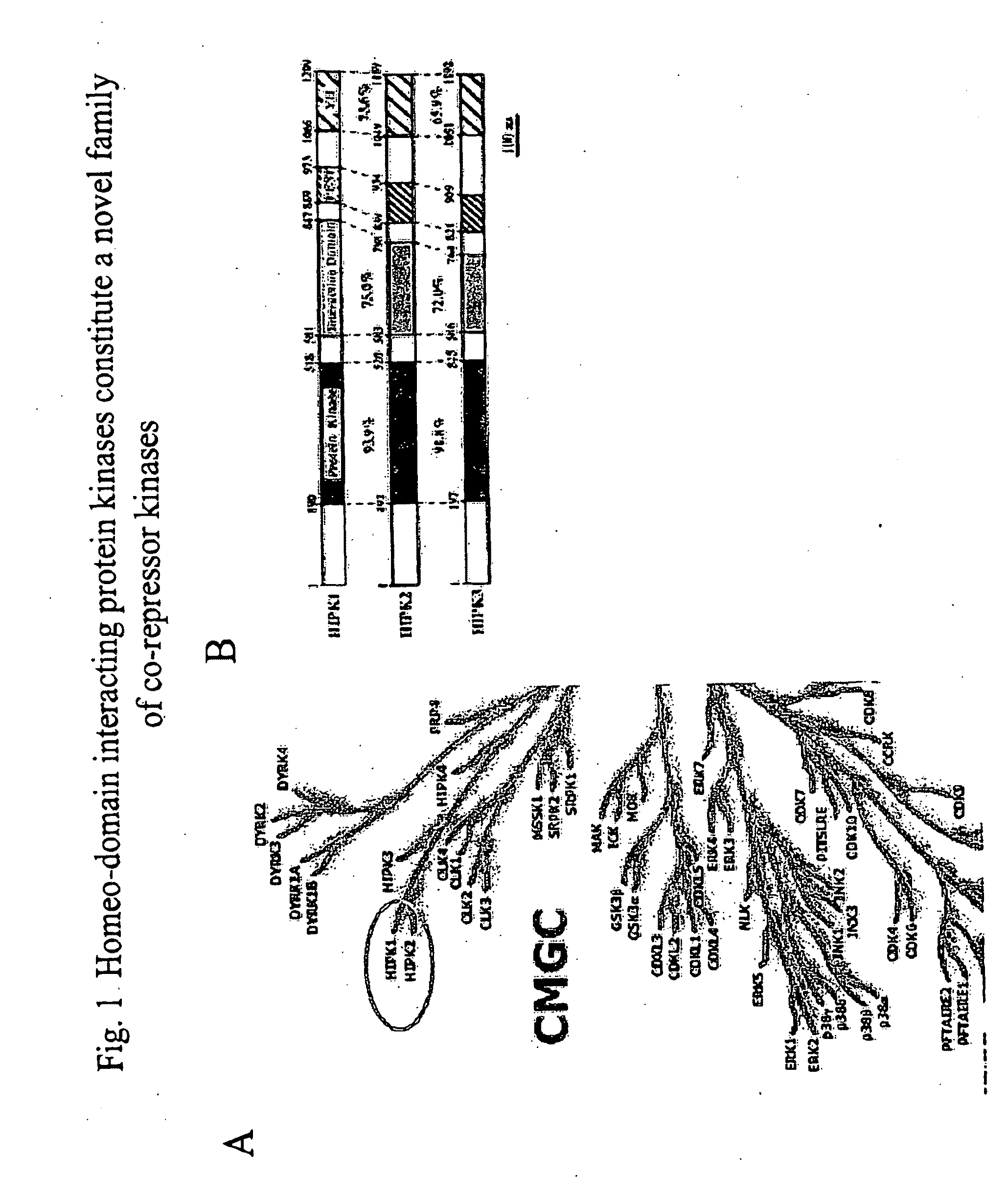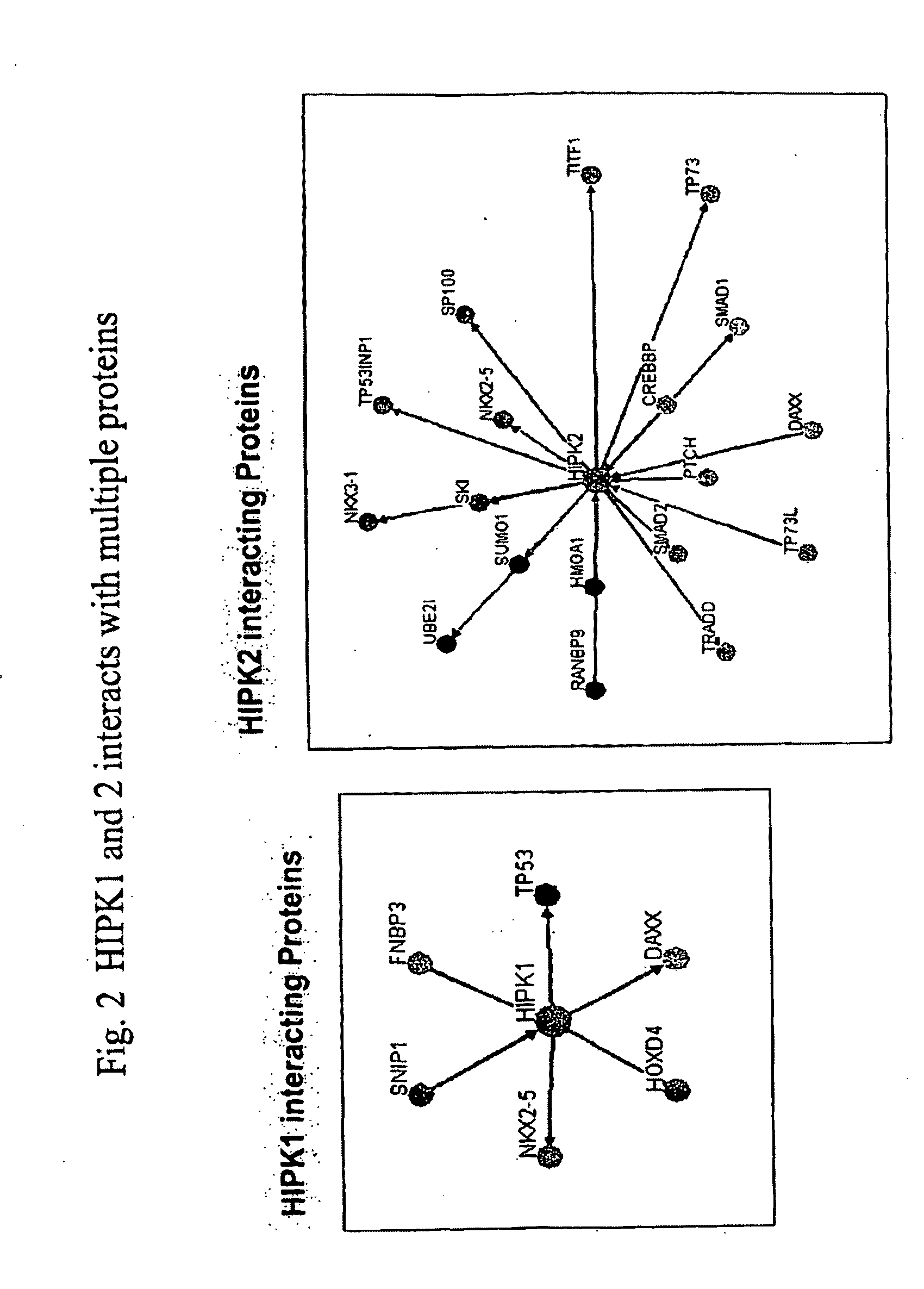Mitotic Progression Genes and Methods of Modulating Mitosis
a technology of mitotic progression and mitotic progression genes, applied in the field of mitotic progression genes and methods of modulating mitosis, can solve the problems of many undesirable side effects of drugs, and achieve the effect of increasing stability and enhancing cellular uptak
- Summary
- Abstract
- Description
- Claims
- Application Information
AI Technical Summary
Benefits of technology
Problems solved by technology
Method used
Image
Examples
Embodiment Construction
[0063]The invention features methods for identifying compounds which inhibit the activity of homeodomain interacting protein kinase 1 (HIPK1), homeodomain interacting protein kinase 2 (HIPK2), and ubiquitin-specific protease 32 (USP32). HIPK1 and HIPK2 are members of a distinct family of serine / threonine kinases (FIG. 1A). The domain structure of each protein is known and set forth in FIG. 1B.
[0064]We find that HIPK1, HIPK2, and USP32 activity are essential for the survival and division of cells derived from neoplastic tissue, but not normal cells.
[0065]This essential activity of HIPK1, HIPK2, and USP32 may arise from their interaction with other proteins (e.g., FIGS. 2-4).
I. Screening Methods to Identify Candidate Therapeutic Compounds
[0066]The invention provides screening methods for the identification of compounds that bind to, or modulate expression or activity of, HIPK1, HIPK2, or USP32.
Screening Assays
[0067]Screening assays to identify compounds that modulate the expression or...
PUM
| Property | Measurement | Unit |
|---|---|---|
| temperatures | aaaaa | aaaaa |
| temperatures | aaaaa | aaaaa |
| temperatures | aaaaa | aaaaa |
Abstract
Description
Claims
Application Information
 Login to View More
Login to View More - R&D
- Intellectual Property
- Life Sciences
- Materials
- Tech Scout
- Unparalleled Data Quality
- Higher Quality Content
- 60% Fewer Hallucinations
Browse by: Latest US Patents, China's latest patents, Technical Efficacy Thesaurus, Application Domain, Technology Topic, Popular Technical Reports.
© 2025 PatSnap. All rights reserved.Legal|Privacy policy|Modern Slavery Act Transparency Statement|Sitemap|About US| Contact US: help@patsnap.com



